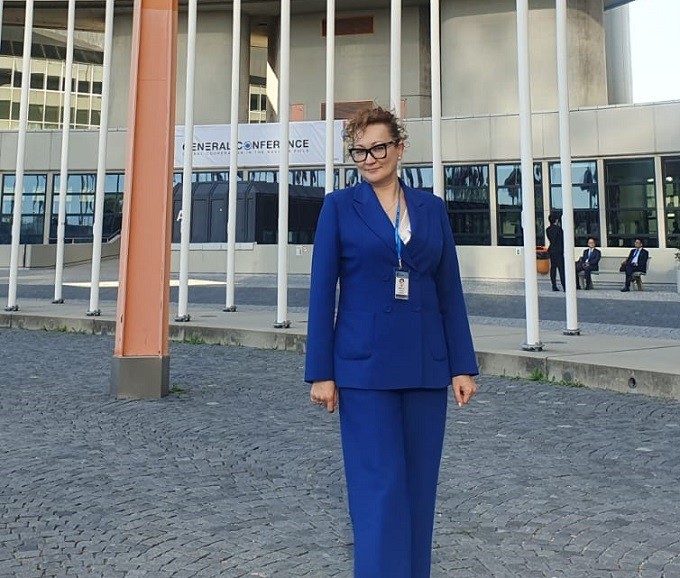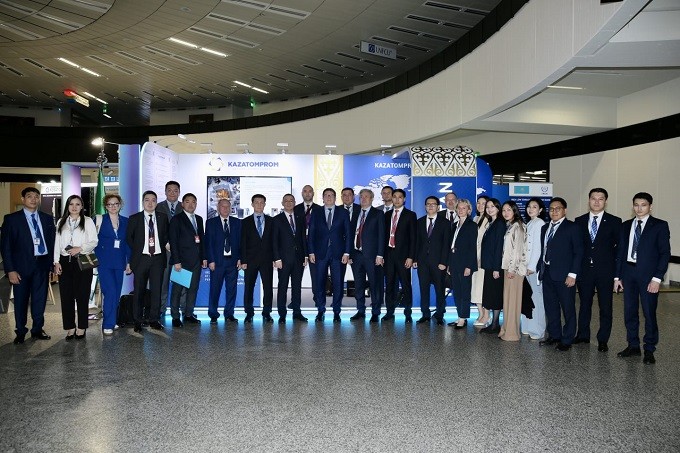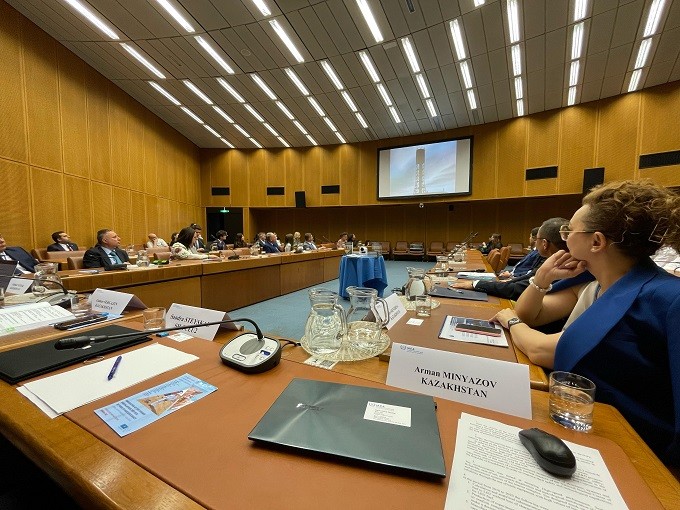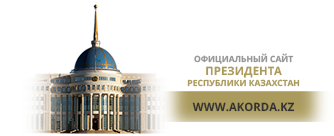26-шы қыркүйекте, АТЭХАГ 67-ші Бас конференциясының шеңберінде 25 және 29 қыркүйек аралығында Австрия, Вена қ. өтетін АТЭХАГ-нің Қазақстанға Семей сынақ полигонын қауіпсіз жай-күйге келтіруге және елдің ұлттық ұмтылысындағы халықаралық ынтымақтастықтың жетістіктерін баяндауда қосқан үлесін көрсететін «Remediation of the former Semipalatinsk test site: 30 years of IAEA assistance» сайд-ивент болып өтті.
Іс-шараның спикерлері ҚР «Ұлттық ядролық орталығы» РМК бас директорының ғылым жөніндегі орынбасары В.А. Витюк, «Атом энергиясы институты» филиалының термоядролық реакторы жағдайларындағы материалдарды сынау зертханасының бастығы А.Ж. Миниязов, «Радиациялық қауіпсіздік және экология институты» филиалының биодозиметриялық зерттеулер зертханасының бастығы Л.Б. Кенжина болды.
Л.Б. Кенжина АТЭХАГ Техникалық кооперациясының KAZ2020002 жобасының үйлестірушісі болып табылады, осы шеңберде «Радиациялық төтенше жағдайларда дайындығы мен әрекет ету үшін Қазақстанда цитогенетикалық биологиялық дозиметрияны дамыту» тақырыбында ауызша баяндама жасады. Өз баяндамасында Лаура Болатказыевна Қазақстандағы цитогенетикалық биологиялық дозиметрияны әзірлеу және қолдануға байланысты басты жағдайларды атап өтіп, радиациялық төтенше жағдайларда халықтың денсаулығын сақтау мен радиациялық қатерді бағалаудағы өз зерттеулерінің маңыздылығын толық сипаттады.
Қазақстан мен АТЭХАГ арасындағы ынтымақтастық сонау 1990 жылдарда, ядролық полигон жабылып, ядролық арсенал жойылған соң басталды. Ол ядролық қауіпсіздік, радиациялық қалпына келтіру және атом энергиясын бейбіт пайдалану саласындағы өнімді және табысты серіктестік байланысты айшықтай отыра, міне, 30 жыл жалғасуда. Осы ұзақ және тиімді бірлескен жұмыс Қазақстанның Атом энергиясы жөніндегі халықаралық агенттігінің қолдауымен қауіпсіздік пен бейбітшілікті қамтамасыз ету жөніндегі жаһандық күш-жігерге бейілділігін тағы мәрте білдіреді.












